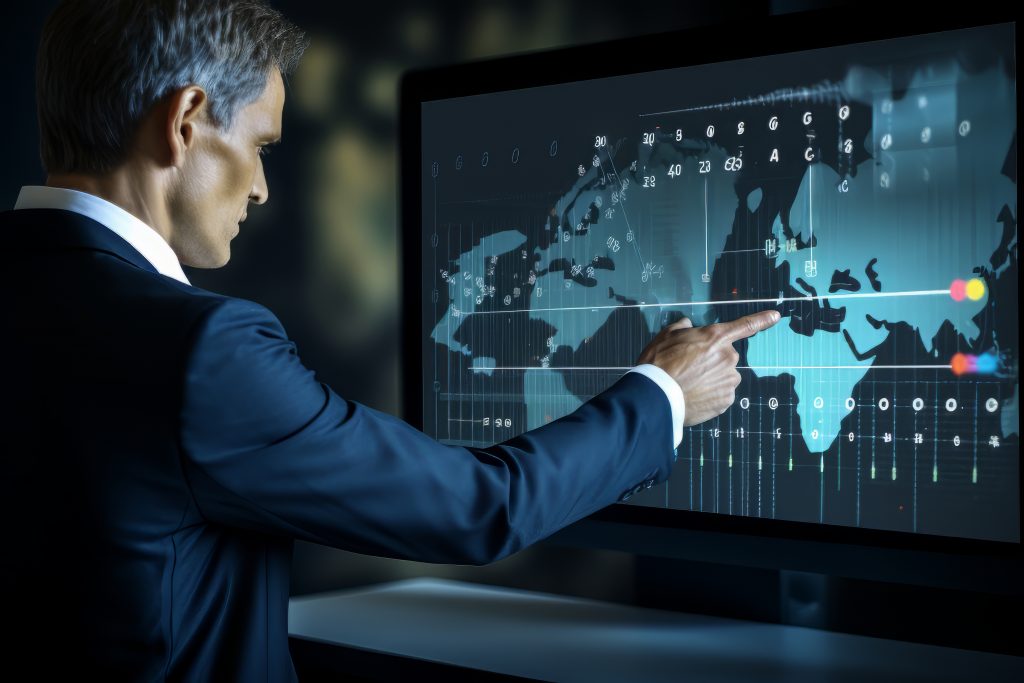Amit Singh, Managing Director (Asia-Pacific and Japan), Terraeagle, underscores the significance of leveraging such cutting-edge technologies through MSSPs, highlighting their essential contribution to the cybersecurity ecosystem and the continuous protection of digital assets against potential cyber attacks.

As digital transformation accelerates, organizations face heightened cyber threats, pushing cybersecurity investments to the forefront. Integrating technologies such as cloud computing, IoT, and AI has expanded the cyber attack surface, rendering traditional security measures insufficient. This challenge is compounded by the global shift towards remote and hybrid work models, which exposes businesses to new vulnerabilities.
The strategic partnership with Managed Security Service Providers (MSSPs) has become crucial in response. MSSPs offer advanced cybersecurity solutions, including threat detection and response, leveraging technologies like SIEM and SOAR to ensure robust defense mechanisms against evolving threats. Their services are essential for rapid incident response, navigating complex regulatory landscapes, and maintaining up-to-date security measures, making them invaluable allies in securing digital assets in today’s dynamic cyber environment.
In a recent conversation, Nisha Sharma, Principal Correspondent at CIO&Leader, and Amit Singh,
Managing Director (Asia-Pacific and Japan) at Terraeagle discussed how the strategic use of SIEM and SOAR enables organizations to proactively manage and mitigate cyber risks, ensuring they maintain a strong security posture in the face of evolving threats.

Managing Director (Asia-Pacific and Japan)
Terraeagle
CIO&Leader: What drives organizations’ significant growth in cybersecurity investments in recent years?
Amit Singh: In today’s digital environment, organizations are increasingly dependent on computer systems. They are rapidly adopting cutting-edge technologies such as cloud computing, IoT, AI, blockchain, and more, significantly expanding the potential targets for cybercriminals. Cyber threats have also increased in volume and complexity, surpassing traditional security measures’ effectiveness. Moreover, supply chain vulnerabilities expose organizations to additional risks, with third-party vendors and suppliers increasingly targeted by malicious actors. In response to these challenges, governments have introduced stringent data protection regulations, compelling organizations to uphold rigorous data security and privacy standards. All these factors seriously threaten businesses, and organizations must take measures to mitigate risks and safeguard their digital assets and resources. According to Cybersecurity Ventures, cybersecurity costs are expected to reach USD 10.5 trillion annually.
CIO&Leader: How do remote and hybrid work environments challenge traditional cybersecurity measures?
Amit Singh: The shift to remote work environments has led to data and system access from various locations and devices that extend beyond traditional perimeter security. Security teams face significant challenges in monitoring and protecting endpoints and networks across diverse geographies and settings. Employees often operate from home offices or public Wi-Fi hotspots, exposing them to unsecured networks and providing cybercriminals with numerous entry points and attack opportunities. Remote workers, operating in isolation, are particularly vulnerable to social engineering tactics and phishing attacks. Cybercriminals exploit this vulnerability by instilling a sense of fear or urgency in employees, compelling them to act hastily. The expanding attack surface, rising endpoint security risks, and the complexity of user authentication and access control are challenges that cannot be addressed with traditional security measures, compelling the deployment of advanced technologies, tools, and services. Advanced security measures enable organizations to effectively mitigate the risks associated with remote and hybrid work environments and safeguard digital assets against evolving cyber threats.
CIO&Leader: What advantages do businesses gain by partnering with Managed Security Service Providers (MSSPs) over developing in-house cybersecurity capabilities?
Amit Singh: MSSPs are external partners that offer some or all cybersecurity services to organizations and offer several advantages over establishing in-house cybersecurity operations. Many organizations need more resources to maintain an effective 24/7 in-house Security Operations Center (SOC). By partnering with an MSSP, organizations can leverage a mature and effective SOC at a comparatively lesser cost than maintaining it internally. Furthermore, organizations stand to benefit by partnering with an MSSP with a range of solutions to protect the environments against specific attack vectors it offers to many customers, with the cost getting distributed. This lowers the Total Cost of Ownership as MSSP can offer each client a higher level of security than the customers can independently achieve with an in-house SOC. MSSPs also offer scalable solutions that are flexible enough to adapt to the changing requirements of businesses easily. With the regulatory landscape getting more complex, organizations are finding it challenging to adapt to the constant requirements of businesses. By partnering with an MSSP, the organization can get support in its compliance management program, implement security controls and compliance reporting, and submit relevant reports to regulatory authorities.
CIO&Leader: How do MSSPs leverage advanced technologies like SIEM and SOAR to protect organizations against cyber threats?
Amit Singh: MSSPs protect organizations from cyber threats by leveraging advanced technologies such as Security Information and Event Management (SIEM) and Security Orchestration, Automation, and Response (SOAR).
SIEM is the foundation for collecting and analyzing data, including logs and network traffic. It also enables the generation of security alerts in real-time and helps maintain regulatory compliance. MSSPs provide an additional layer of human intelligence along with advanced and effective tools to improve the entire threat detection and response process. This approach is crucial in protecting organizations from the ever-evolving threat landscape.
MSSPs leverage SOAR solutions to streamline and automate security operations in their SOCs. SOAR enhances incidence response, threat investigation, and overall security processes by leveraging the power of playbooks, machine learning, and progressive automation.
Deploying these technologies allows MSSPs to offer organizations proactive threat detection and swift incident response, enhancing the latter’s overall cybersecurity posture.
CIO&Leader: Why is having a rapid incident response capability crucial for organizations, and how do MSSPs enhance this aspect?
Amit Singh: Organizations must have a rapid response capability for detecting and responding to cyber threats or security breaches. In the case of any security incident, the damage caused is minimized, preventing further compromise of the organization’s systems. Business operations are not disrupted, and downtime is reduced, with a lesser impact on productivity and revenue. The rapid response also helps organizations meet their regulatory obligations, besides causing no reputational damage.
MSSPs have dedicated Security Operation Centers (SOCs) with highly skilled security analysts adept at triaging real-time security alerts, investigating them, and implementing appropriate responses. Any suspicious activities are alerted on time, and the MSSPs provide continuous, round-the-clock monitoring of the organization’s networks, systems, and applications. MSSPs and organizations can establish a robust incident response plan customized to the latter’s environment and implement measures to prevent future attacks.
CIO&Leader: How do MSSPs assist organizations in navigating the complexities of regulatory compliance within cybersecurity?
Amit Singh: Having in-depth knowledge of regulatory requirements and evolving industry standards, MSSPs can provide comprehensive support for organizations and ensure they remain compliant. With 24/7 monitoring and threat detection services, MSSPs help organizations respond promptly to security incidents under regulatory requirements. They help organizations navigate the complexities of the regulatory landscape within cyber security, generate reports and audit trails, and demonstrate compliance while reducing the risk of penalties.
CIO&Leader: What unique benefits does a zero lock-in approach provide to organizations when choosing an MSSP?
Amit Singh: Using zero lock-in or technology agnostic approach helps customers select the best tools and solutions from different vendors. It also makes integrating and managing different security solutions easier under one SOC. Additionally, it promotes customization and scalability without being constrained by vendor-specific limitations.
CIO&Leader: How do MSSPs ensure that their protective measures remain current and effective in the face of continuously evolving cyber threats?
Amit Singh: Integrating artificial intelligence (AI) is a key factor in enabling Managed Security Service Providers (MSSPs) to stay ahead in the constantly evolving threat landscape. AI enhances the effectiveness of MSSPs’ protective measures by automating threat detection, providing predictive analytics, and streamlining incident response. They utilize AI-driven vulnerability assessments and penetration testing to identify and address weaknesses across an organization’s digital infrastructure, applications, and systems. AI also plays a crucial role in helping MSSPs understand current security gaps and improve their incident response plans. Additionally, MSSPs provide ongoing security awareness training, enabling employees to identify and respond to cyber threats effectively.
Image Source: Freepik